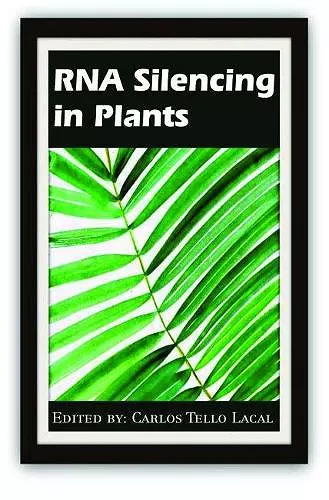RNA Silencing in Plants
Format:Hardback
Publisher:Arcler Education Inc
Published:28th Feb '18
Should be back in stock very soon

RNA silencing is a central mechanism regulating the growth and development of most eukaryotes by linking developmental programs and environmental signals to changes in gene expression. The basic process of RNA silencing consists of the cleavage of double stranded RNA (dsRNA) or hairpin RNA (hpRNA) by Dicer-like (DCL) proteins into small interfering RNAs (siRNAs), which are subsequently loaded onto RNA-induced silencing complexes (RISC) containing Argonaute (AGO) proteins to destroy single-stranded cognate RNA. RNA silencing acts at the transcriptional (transcriptional gene silencing, TGS) and post-transcriptional (post-transcriptional gene silencing, PTGS) levels, being the main targets of the former plant genes responsible for stress tolerance, cell-type specification and organ-patterning, while TGS mostly represses the transcription of transposable elements through epigenetic modifications. Another important role of RNA silencing mechanisms in plants is the defense against viral pathogens. Through the compilation of open access peer-reviewed papers, the present book provides a general description of the different RNA silencing pathways in plants. In Chapter number 1, the editor provides a general overview of RNA silencing in plants, including proteins involved, TGS and PTGS pathways, role in antiviral defense and the counter-defensive mechanism of viral suppressors. The authors of the study presented in Chapter 2 identified all six DCL genes in Medicago truncatula and demonstrated their ubiquitous expression in plant cells and upregulation in root nodules. Chapter 3 presents the phylogenetic classification of plant AGO proteins and discusses their evolutionary process. In Chapter 4, the paralogues to the key Arabidopsis genes involved in RNA-dependent DNA methylation (RdDM) across the different angiosperm groups are identified, sequenced and classified. The study presented in Chapter 5 investigates HDA6-mediated silencing mechanisms through genome-wide transcription profiling and proposes the cooperation of this protein with MET1 to regulate locus-directed heterocromatin silencing. In Chapter 6, the current status of epigenetic silencing in transgenic technology is reviewed. In Chapter 7, the Pol IV- and RDR2-dependent precursors of 24-nucleotide siRNAs, P4R2 RNAs, are identified and their role in de novo DNA methylation is discussed. By employing insertional mutants, the authors of the study shown in Chapter 8 identified unique functions for DCL and RDR proteins in the diversification of small RNA pathways. Chapter 9 describes the identification and expression analysis of RNA silencing components in sorghum. The authors of the study...
ISBN: 9781773610481
Dimensions: unknown
Weight: unknown
373 pages